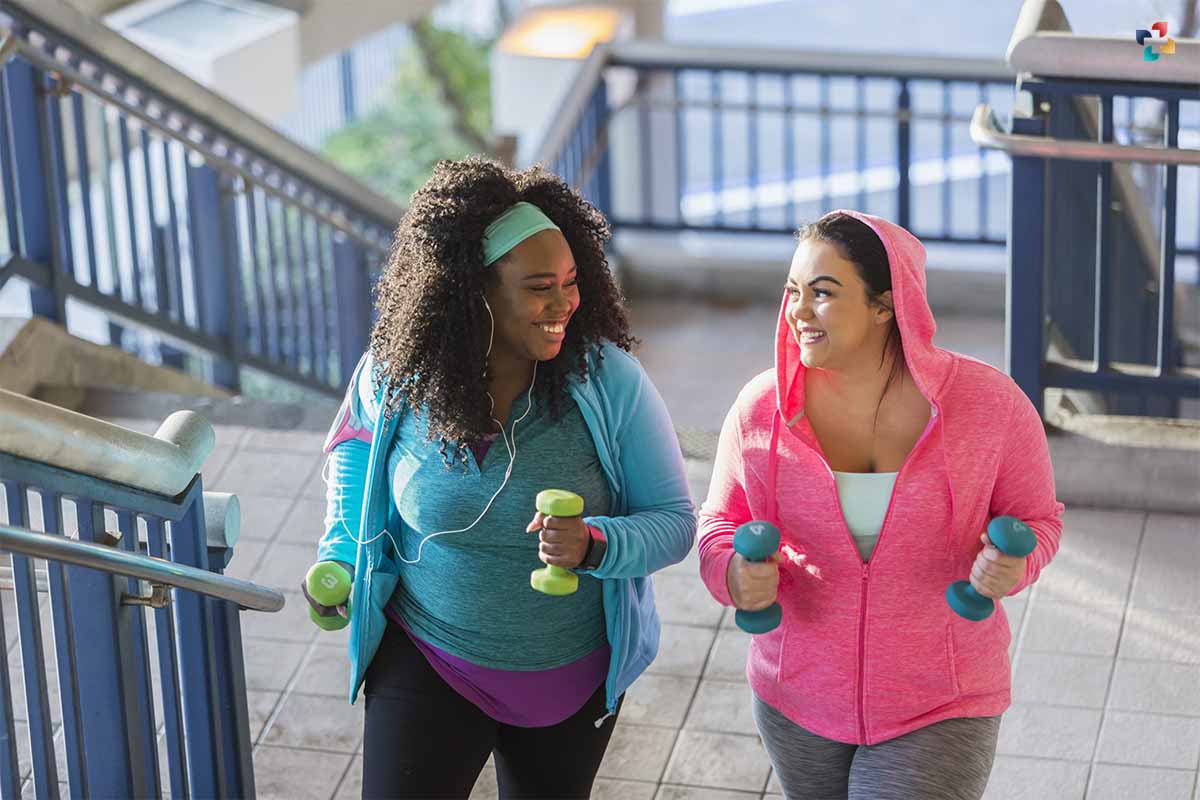Although the word “athlete” has traditionally been used for persons who participate in individual or team sports, a new type of athlete has evolved in recent years that does not include competition. Because of the physically demanding nature of their employment, personnel of the military, law enforcement, and first responders such as firemen and paramedics are commonly referred to as “tactical athletes” nowadays. As a consequence, the area of tactical strength and conditioning has arisen to offer adequate exercise and fitness regimens to match the physically demanding nature of these occupations.
Tactical athletes and first responders should have exercise regimes that cover a range of demands, including mobility, movement efficiency, aerobic capacity, and power. This is in contrast to the typical strength training strategy, which concentrates on just one body portion or muscle group at a time. Seven strategies for building successful training regimens for first responders are shared here by firemen and tactical strength and conditioning professionals.
Consistently following fitness tips for first responders can also improve the overall quality of life and job satisfaction. Consistency is key when it comes to following fitness tips for first responders.
Here are 10 Fitness Tips for First Responders;
1. Injury prevention requires proper mobility training and vigorous warm-ups.
Joey Figone, a captain with the Menlo Fire Department in Northern California and an ACE Certified Personal Trainer and Peer Fitness Trainer (for firefighters), oversees the training school at his department. He guarantees that mobility and flexibility are important components of new recruit fitness regimens.
“When we talk to new recruits about fitness, we stress that having a healthy, functional body is crucial for work longevity,” Figone says. “To assist limit the chances of injury from executing the physically demanding demands of the work, we make mobility and flexibility training a fundamental element of the conditioning program at the school. We provide our recruits with foam rollers and then take the time to educate them on how to use them appropriately. Moreover, we train recruits how to do a full-body dynamic warm-up before beginning a workout.” Discover how to utilize foam rollers to increase joint mobility and range of motion.
These fitness tips for first responders can also help reduce the risk of chronic health conditions such as heart disease and diabetes.
Figone emphasizes that while establishing programs for firefighters, they must account for the daily fire-training routine. “When it comes to fitness regimens, we work in inverse proportion to the daily fire training routine,” he adds. “If the day involves a lecture, then we conduct a more demanding exercise, but if they are undergoing live fire training, we do a lower-intensity workout. The one consistency is that we always start every session with a full dynamic warm-up.” This vigorous warm-up will assist you in preparing for any exercise or physically demanding activity.
Steve Cruz, an Arizona-based career fireman, and ACE Peer Fitness Trainer feel that his teams need mobility training. “In our department, we employ mobility exercises for injury prevention and administer the Functional Movement Screen to our members on a yearly basis in an attempt to protect our individuals from being hurt,” says. “It helps us examine and detect both asymmetries and constraints that our staff may have.
We then concentrate on developing mobility, strengthening stability, and teaching our boys correct movement preparation routines.” Cruz adds that foam rollers, therapy balls, and yoga are all significant components of his personal fitness regimen while on duty.” Find out more about the advantages of movement preparation.
Fitness tips for first responders are crucial for maintaining their physical well-being.
2. For first responders, strength is the MOST essential component of fitness.
Tactical Strength and Conditioning Expert John Hofman, MS, of Southern California University Health Sciences, specializes in establishing training regimens for firemen and first responders. When asked what the most crucial aspect of fitness for first responders was, Hofman was clear. “Fortune!” he exclaims loudly.
“We aim to develop them strong in order to decrease workplace injuries. The majority of low-back injuries are caused by moving heavy patients onto gurneys, which demands a great deal of strength and force. We educate firemen in our training that if they want to avoid injuries, they should grow stronger because the stronger they are, the tougher they are to break.”
Since many fire stations do not have the space (or the funds) to purchase a large quantity of training equipment, Hoffman employs bodyweight exercises to assist the firemen in his program get stronger:
Back Row with TRX. This exercise, according to Hofman, “helps counterbalance the bad posture of many first responders as a consequence of being weighed down with up to 85 pounds of equipment.”
Step-ups to the side. “Firefighters spend more time on one leg than on two,” Hofman adds. “We aim to provide them workouts that will help them enhance their strength and balance.”

Well-rounded fitness tips for first responders should include both cardio and strength training exercises.
Plank on one side. “Since they often operate with unequal weights, firemen might become imbalanced,” Hofman adds. “This exercise may help strengthen the core and lateral hip muscles, such as the gluteus medius, leading to a more balanced physique.”
Cruz employs the same strategy. “For strength, we perform pushes and pulls for the upper body and squats and hip hinges for the lower body,” he says. “We utilize dumbbells, kettlebells, TRX suspension trainers, and battle ropes, allowing us to complete circuit training while on duty.”
Waves of Battle Ropes. This workout consists of 30-second rapid intervals followed by 30 seconds of active rest while doing a plank or body-weight squats.
Dumbbell Squats in a Goblet. This workout lasts between 20 and 45 seconds.
Renegade Rows with Dumbbells. Alternate arms for 20 to 45 seconds to complete this workout.
These fitness tips for first responders can also improve their immune systems and reduce the risk of illness.
3. Since working as a team is crucial for first responders, exercises are developed to encourage collaboration among the crews on each shift.
Firefighters benefit from exercise in a variety of ways, including improved teamwork in high-stress circumstances. As a consequence, many firefighting teams set aside time during their shifts to work out together.
“Fitness is vitally important to our work,” says Jess Specht, battalion chief of the Oceanside Fire Department in California. “Exercising throughout their shift helps our personnel create camaraderie and unit cohesiveness, while also reducing numerous on-the-job injuries.”
Cruz concurs. “Exercising together surely helps to create unit cohesiveness and teamwork throughout each shift’s crews. Working out together also helps our troops acquire the physical capacity to accomplish the vast range of job tasks required for working a scene.”
These fitness tips for first responders can also improve their mental resilience and ability to cope with trauma.
4. Investing in appropriate exercise equipment may help fire departments save money over time.
Apart from a lack of time, obtaining the right equipment is a big impediment to working out at a fire station. Some departments have a budget for acquiring exercise equipment for each station, whilst others simply do not have the means to invest in high-quality equipment. One strategy for raising funding for suitable training equipment is to emphasize the fact that exercise may help firemen avoid a variety of physical concerns, such as back discomfort, shoulder strains, and obesity-related health problems.
Fitness tips for first responders are crucial for maintaining their mental well-being.
When a firefighter is wounded on the job, the department suffers in two ways. First and foremost, it must pay the firefighter’s income while he or she is wounded and unable to work. Second, it must pay overtime for a fireman to replace the shift gap.
“When we presented our budget to the city council, we emphasized the cost savings from keeping firemen injury-free and on the job. “Our city reacted by allocating funds to purchase workout equipment for each of our eight stations,” Specht adds. “Each now features a few cardio machines as well as a range of equipment such as medicine balls, squat racks, barbells, benches, and dumbbells.”
Fitness tips for first responders should be tailored to the specific needs and challenges of their job and work environment.
5. There are several methods for crews to create time for exercise or squeeze in a workout.
“Each shift’s crew has its own strategy for working out together,” Specht adds. “One home goes to a commercial health club, while another runs the stairs and trains on the beach. My crew enjoys practicing in our station home. We use high-intensity interval training for cardio and strength training equipment to create workout circuits. We’ll choose five to ten exercises and cycle between them for a certain length of time.”
6. Physical activity is crucial, but so is working at an appropriate intensity while on duty.
“We attempt to exercise during our shift, but in my experience, hard weightlifting days or very intensive exercises are better saved for our days off,” Cruz says. “You do not want to be in the midst of a hard exercise while on duty, and have the tones go off for a three-alarm fire. You’re basically setting yourself up for weariness, which might result in a major injury to a member of your crew.”

Fitness tips for first responders should also focus on injury prevention and proper technique during exercises. These fitness tips for first responders can also improve their immune system, reducing the risk of illness and injury.
7. Exercise enhances mental well-being and assists firemen and first responders in dealing with stress.
“Because of the challenges we face when on call, it’s critical for firemen and emergency medical services to exercise since it may improve mental well-being,” Cruz says. “Mental well-being and physical fitness go full circle since being fit gives you the confidence to execute the work safely without getting hurt. Also, if you look well and feel good about yourself, your self-confidence and work performance both improve.”
First responders may not be rewarded as much as professional athletes, but they may learn from the professionals’ workout regimens to remain in peak physical condition for the rigors of their professions. Obviously, exercise has several advantages for first responders, and there are numerous ways they may keep healthy to execute their duties.
“Exercise regimens that contain the main components of fitness, especially strength, cardio, and flexibility,” Cruz explains, “are critical for helping us operate at our peak.”
Implementing fitness tips for first responders can help reduce the risk of burnout and improve job satisfaction.
8. Keep an eye on your mouth! Learn what you’re consuming and what’s in it.
There are several processed foods available on the market (and in firehouses). Food corporations are becoming more adept at concealing these chemicals and additions. The first and most important guideline of excellent nutrition is to know what you’re consuming. That is why all diets seem to work (at least for a time); they all drive you to review your dietary choices.
Long-term diet strategies do not appeal to me. The greatest thing you can do for your nutrition is to educate yourself on the foods you eat and to read labels. Learn about healthy choices and how to manage your diet throughout your career.
These fitness tips for first responders can also improve their overall quality of life and longevity in their careers.
9. Eat complete foods and know your quantities.
When you do read labels, try to choose items with few ingredients. Try to eat meals with just one component, such as potatoes, poultry, fish, vegetables, and fruit. Since they just contain one ingredient, many of these meals do not need labeling! Then, use this technique (shown below) to establish serving sizes and quantities.
Hydrate… hydrate… hydrate… with water! Water aids in every metabolic function in the body and is essential for peak performance. Increasing dehydration from exercise (or firefighting) decreases performance, mental ability, and effort perception, and it may be fatal. The capacity to do a high-intensity exercise may be severely hampered by a 2% decrease in body water (Kleiner, 1999). Every first responder should drink half of their body weight in ounces each day.

Thus, if you weigh 180 pounds, try to drink 90 ounces of water. A more extensive “hydration” strategy may be seen in the chart below. The second component of this strategy is to minimize your intake of sugary sodas, juices, energy drinks, and even diet sodas. The extra sugars and chemicals may disrupt insulin sensitivity and cause you to want sweets. Try to keep with simple water, I personally put some fruits with mine to give it a greater taste.
These fitness tips for first responders can also improve their confidence and self-esteem, which can positively impact their job performance.
10. Discover effective stress management techniques! Please pay attention to the focus on “positively.”
You must learn to cope with and manage the stress that we see as first responders. The importance of self-awareness cannot be overstated. I believe that in many situations, we do not comprehend or take the time to grasp how stress impacts our health and relationships. Discover something that works for you and your family; go on walks, do yoga, seek therapy, exercise, and/or meditate. Personally, I do a little bit of everything! I’ve found that spending 10 minutes each shift to sit quietly and practice some yoga exercises has been quite beneficial. It keeps me grounded and increases my mobility.
These fitness tips for first responders can help them stay fit and healthy despite their demanding jobs. These fitness tips for first responders can ultimately lead to a longer and healthier career in the first responder field
Read More On Similar Topic 5 Steps to Get Started in Group Fitness







